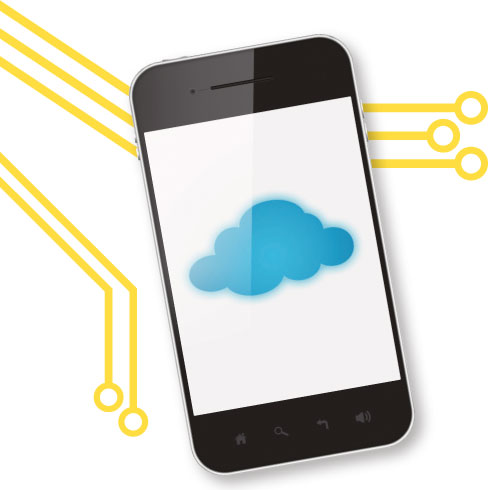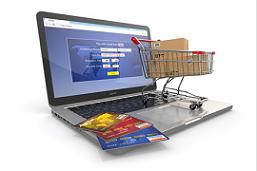This isn’t a picture of the future—it’s happening right now. No longer relegated to using cash registers, costly software programs and separate credit card terminals, today’s retailers have turned to more svelte and stealthy technology to help them stay in tune to the needs of their valued customers.
Those changes are both a blessing and curse for small retailers. While the cost of technology has come down, putting both applications and equipment within closer reach of smaller organizations, customers have come to expect the convenient checkout, inventory and CRM solutions that the Nordstroms and Apples of the world are using. Also growing in popularity are tech-based gift card processing, couponing, and customer loyalty programs—all of which are used often by small, gift-oriented retailers.
Installing Line-Busters
Mobile “line-buster” solutions already in use by large retailers are gaining ground among smaller outfits, which are using iPads, handheld devices and even smartphones to get customers checked out as quickly as possible. “People want convenience,” says Bird. “They want to be able to pick out their item, have it rung up and bagged, and then walk out the door—in some cases, without having to go to a traditional ‘counter’ during the process.”
Achieving that Holy Grail requires an investment in technology and a commitment to line-busting systems, says Bird. At their simplest, these setups include a device for PIN entry (to accommodate debit card usage), a Bluetooth or Wi-Fi printer, and a mobile application (downloaded from Blackberry, Android or Apple) that’s updated regularly via a “push” system. Other components can include EMV or “smart card” readers and barcode scanners, both of which are “coming soon,” according to Bird.
The good news is that inventory control—typically handled by a cash register-software combination—is made easier when new technologies come into the picture. “It can all be done on a tablet computer now,” says Bird, pointing out that retailers can combine couponing, loyalty and other programs onto mobile devices that serve as “central commands” for myriad functions.
Another trend making technology adoption easier for small retailers is the movement to cloud-based applications, rather than those that are purchased and installed. Often available on a subscription basis, and with no up-front fee, these applications reside on offsite servers and allow retailers to tap into them. Another advantage is that product updates can be pushed out to the retailer automatically and seamlessly, allowing the technology to remain current.
“Everyone is looking at the cloud right now,” says Bird, who adds that with security being a top-of-mind concern for establishments that use consumer payment data, most cloud-based applications do not store cardholder data and all transactions are encrypted. “The batches are emptied and the information is not stored in the cloud, making it a secure and safe choice for retailers.”
Minimizing Costs
“The selection, installation, support and implementation processes involved with a new POS system are intensive for small retailers to have to undertake,” says Metzger. “Thanks to the new options on the market, organizations can get everything in a neat, affordable package.” After downloading an app, for example, retailers can set up inventory parameters to run through a back-office component or their tablets or smartphones.
Checking inventory, running transactions and capturing customer e-mail addresses not only becomes mobile but also easier and faster. “Your POS system becomes mobile and untethered, so you can walk around with it on the sales floor,” says Metzger. “You can’t do that with a traditional POS system unless you want to lug a full computer around your store.”
No End in Sight
The speed at which technology is evolving isn’t letting up, and neither is the consumer’s desire for a fast, easy and fruitful retail experience. Where in the past a customer would stand by as a shopowner “called around” to find a product at a different location, today’s buyer wants that information immediately. And, thanks to the new technology she’s seen at her local Starbucks and Apple stores, she wants to hand a credit card to a clerk who is working on the sales floor and walk out with her purchase without having to stand in line.
Upgrading and changing systems is never fun, easy or cheap, but the good news is that your store probably has at least some of the components in place. Wi-Fi networks and mobile-based 4G networks, for example, are fairly common. And that iPad that you got for Christmas could very well serve as the central command post for your state-of-the-art POS.
7 Tips for Buying Retail Technology
The experts and vendors interviewed for this article offered these seven tips for retailers looking to upgrade or replace their current software, equipment and peripherals:
1. Look at solutions that other retailers are already using successfully.
2. Come up with a list of “must haves” that the new software, equipment and/or application must be able to handle for your store.
3. Go online and see what retailers have to say about their systems (via feedback, social networking sites, case studies, testimonials, etc.).
4. Find a system that offers state-of-the-art Web 2.0 options, such as mobile capabilities, Bluetooth or cloud-based solutions.
5. Use a 2–5 year timeline when coming up with shopping criteria to ensure that the solution can scale up as your store grows.
6. Look for a vendor that has expertise in the small, niche retail environment.
7. Narrow your list to two or three options, and ask each vendor to demonstrate its products.
In the Market for a New POS?
CounterPoint by Radiant Systems
Radiant Systems, the fastest growing retail technology provider, is installed in more than 100,000 sites. CounterPoint is a point-of-sale and inventory management suite for all size buyers.
AmberPOS
For over 15 years, AmberPOS by Pacific Amber has provided point-of-sale solutions for companies all across the United States and Canada. AmberPOS features customer relationship, vendor and inventory management.
Microsoft Dynamics Retail Management System
Microsoft Dynamics RMS is a robust checkout, customer relationship and inventory management system. It is available in two packages: RMS Store Operations for individual stores and RMS Headquarters for multiple locations.
Sage BusinessVision Accounting – Retail Edition
Sage BusinessVision Accounting – Retail Edition offers small retailers more than just point of sale. It is a full-fledged business management solution with powerful out-of-the-box capabilities.
Retail STAR
Retail STAR has been a leading point-of-sale solution for more than two decades. From inventory control to barcode printing, Retail STAR’s comprehensive solution represents a full suite of integrated functionality.
Consignment Ease & Consignment Success
Formerly Best Consignment Software, Consignment Ease and Consignment Success are extremely user-friendly, affordable solutions designed specifically for consignment retailers, offering robust POS and inventory management.
Liberty4 Consignment
As one of the most widely used consignment software solutions, Liberty4 Consignment utilizes its 20 years in the industry to provide a highly scalable, easy-to-use, complete solution created specifically for resellers.
MultiFlex Fashion RMS
MultiFlex Fashion RMS is an excellent POS system for small and mid-size fashion and apparel retailers, especially those with stores in different cities and states. The system includes back-office solutions, POS, inventory control and CRM.
MerchantOS
MerchantOS is in use by more than 1,600 small retailers in both the United States and Canada. This user-friendly, extremely affordable solution offers powerful point-of-sale and inventory management capabilities in a web-based solution.
Comcash
More than 5,000 retailers have relied on Comcash POS for point-of-sale, inventory management and CRM software. Comcash offers specific solutions for convenience stores, grocery stores and general retailers.









